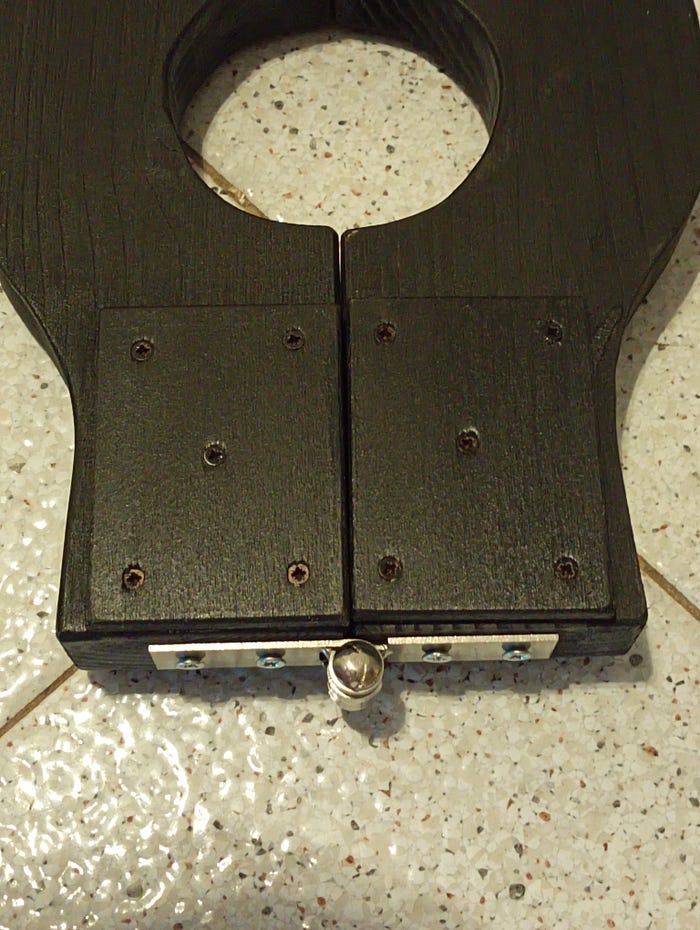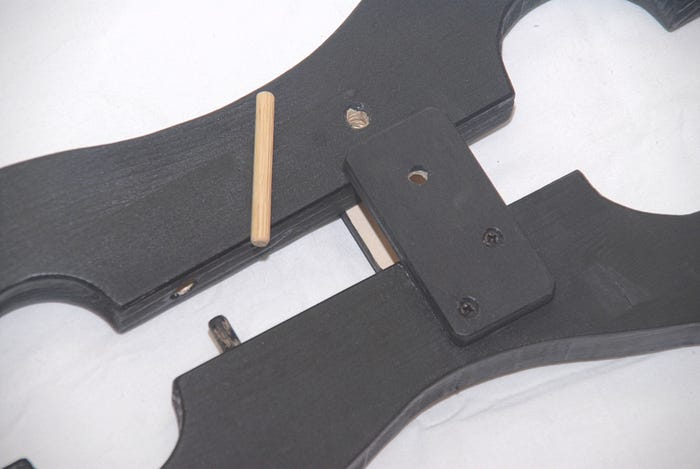
To Hinge or Not to Hinge: Choosing the Right Bondage Stock Design
Share
There’s something timeless about a well-crafted set of bondage stocks. They don’t just restrain — they make a statement.
Traditionally, stocks (or pillories) are built with a hinge on one side and a latch on the other. The two halves swing open smoothly, inviting the wrists and ankles into place before locking shut. This classic mechanism has been trusted for generations, offering ease of use and a traditional aesthetic.
But there’s another way. In my workshop, I also build stocks without hinges at all — two separate pieces that join together when one side overlaps the other. A solid peg is passed through, locking the parts into a single, unbreakable unit. It’s a design that removes the hinge as a potential weak spot, especially when the stocks are open and subject to leverage.
Hinge & Latch Style
- Classic and elegant
- Instantly recognizable
- Smooth operation

Peg & Overlap Style
- Strong and discreet
- No hinge to damage under leverage
- Creates a solid one-piece structure
That’s why my handcrafted pillories come in both versions, allowing you to choose the one that suits your play style and aesthetic. The same attention to detail is applied to my contoured stocks for wrists and ankles, giving you options built to last.

This article can be also found on medium.com